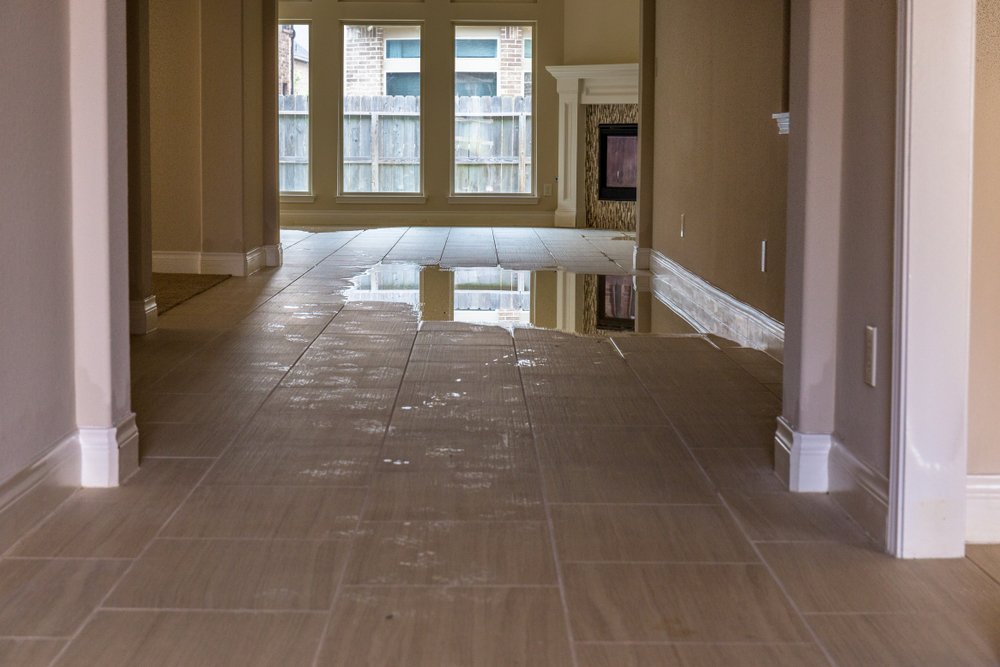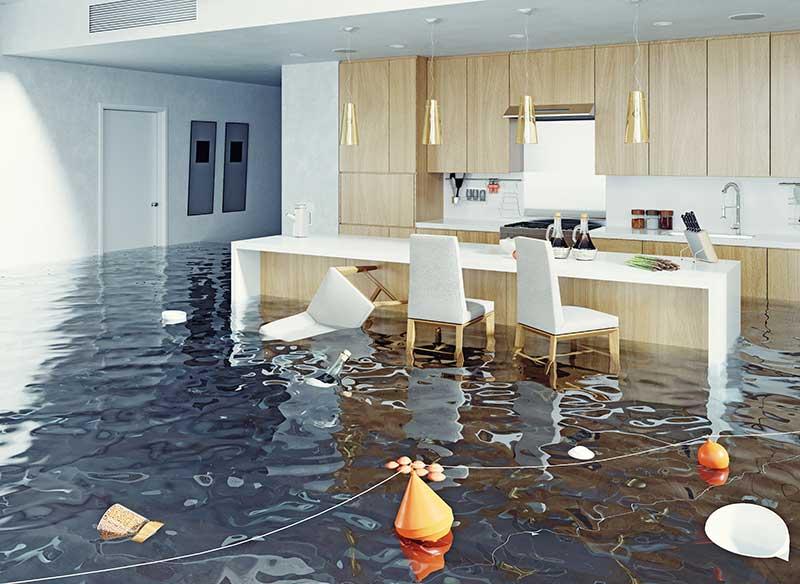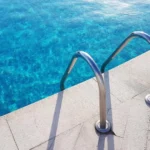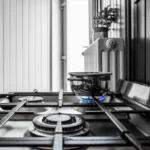Houses or hotels near rivers, oceans, and places close to water bodies are a blessing. It provides a great view to enjoy almost all the time. But as the saying goes, every coin has two sides; some setbacks can cause extreme trouble for people. The water can pose severe damage to your building during heavy downpours when the water level rises, therefore, destroying the property and making that blessing a curse in the long term.
One of those devastating experiences that a person can feel when living near a water body is severe water damage or dealing with floods in your house or basement. Water damage is not limited to just floods, but it can be caused by broken or leaking pipes, leaking appliances, or just water spillage. To make situations even worse, sewer backups and flooded basements can invite even more trouble to your place in the form of molds and termites.
It is quite risky to allow the water to enter your house premises and damage your belongings. As we don’t have control over nature, these factors are considered a natural tragedy. However, there are hardly a few things that can’t be restored. Luckily most of the damage done by water can be restored. Water damage restoration allows you to take things back to normal. Though it might be risky and difficult at times, the risk can be managed easily with the help of professionals. Also, the professionals with their expert knowledge will help in repair and restoring the home to normal and make the building lively and functional once again.
What is water damage?
Water damage is a term used to refer to the damage caused by the water. Usually, the damage is caused by water intruding the system or the facility. Water can serve severe damage to the electrical appliances, property, buildings, materials, etc. Water at times can be very destructive if it is supported by force. Water damage can be of two types in general.
- Natural Water Damage: Water damage caused by natural forces is usually considered natural water damage. Floods are the most common natural water damage that people have to deal with across the globe.
- Artificial, manmade, accidental: Damage caused by something other than any natural phenomenon can be considered artificial, manmade, or accidental water damage. Leaks are the most common type of water damage that people worldwide have to deal with.
Water damage restoration
Damage caused by the water can be very dangerous, but it can be restored. The process of restoring the water damage is called water damage restoration. Restoring water damage can be tricky. Therefore, we suggest you take help from professionals before you try self-diagnosis. Water damage restoration deals with restoring the property, removing the water, and stopping the source from pumping in more water into your premises.
A guide to water damage restoration
Water cleanup can be a challenging task even for professionals. It is not simply taking the water out of the house but it is also about minimizing the risk. What comes with water is the allergic reactions, illness, and other conditions that can adversely affect your health. Also, the level of restoration of water damage depends on the category of damage caused by water. During water damage, there is a chance of some materials that cannot be restored. Materials like carpet, fiberfill, insulations, drywall, etc., can be destroyed beyond repair by the water. Here is what you should do to restore water damage:

- Cut the water supply: The first and foremost thing to stop or restore the water damage is to find the leak that has allowed the water to enter and stop it. In a natural caused disaster like floods, it is almost impossible to stop it. However, if one is careful while building the facility, it can be controlled, and the damage can be minimized. There is also another reason to cut the water supply and dry the place out, and it is due to the mold and bacteria that water brings with it. Mould and bacteria can easily destroy useful things in our houses. That is why it is recommended to dry the place and cut the water supply as soon as possible to restore the water damage.
- Move to another safe house: Safety should be the priority. As soon as the house gets logged with water, you should move to a safe house with your family. Also, turn off the power, wear protective gear and protect the valuables. Water and electricity are not quite good with each other and can cause a lot more damage to your property and hindrances during the restoration process.
- Inspect and assess: Restoration companies conduct a thorough damage inspection of the location of the damage. This inspection will decide the category of the damage that occurred. Based on the inspection, they classify the level of damage done by the overflowing.
- Removing the water: Nothing can be restored if the water is still there. Also, containing water for a long time can be harmful as mold growth and bacteria can cause additional problems. The water is extracted by various methods like submersible pumps, portable vacuums, truck-mounted vacuums, etc. These vacuums are designed in such a way that they will absorb all standing and surface water from the surface quickly.
- Check for mold: Mold can be troublesome if ignored. Also, it is quite hard to stop the growth of molds once it starts growing. It is always recommended to take help from professionals in removing mold. Always check for mold even after complete water damage restoration as it might be growing silently in a corner you did not expect.
- Drying and Dehumidifying: Since your house has many things that can hold water for a long time, drying and dehumidifying is the process one should perform. Even after the water is removed from the house, materials hold water for a long time and destroy them. With drying and dehumidifying, materials that contain water will be dried, and the home will look dry and safe. It also stops the growth of molds and bacteria.
- Sanitizing the house: Before the COVID-19 Pandemic sanitizing the house was rarely done. Well, in the water damage restoration process cleaning and sanitizing is very crucial. Although the house may look dry on the outside, various risks might be lurking somewhere in the house. That is why proper cleaning and sanitizing of the house is important. Use the spray and wipe cleaning to clean most of the parts. Also, use dry clean and wet cleaning wherever it is necessary.
- Complete restoration: After everything is taken care of, it is time to restore the items. Most of the time, the house items present in the house are not completely damaged. The items can be restored or can be fixed. However, there is also a chance that few items might be completely damaged, but one can’t be sure unless it is checked.
- Call Insurance company: Not all home insurance policies cover flood damage or water damage. However, if you have home insurance, then this is the time to use it. Document the value of every item which is damaged. It is considered wise to take photos as proof to convince the adjuster. The insurance will vary from policy to policy, but it can cover the loss.
- Move back into the house: After sanitization, restoration, drying, and every other process mentioned above are completed, you can move back into your house. Once the insurance company gives you the green light to move in, it is considered completely safe to move in. However, few things might not be completely the same after moving in, but it is not the place that makes it home but the people. Before moving into the house, it is always wise to personally check the house and ensure that everything is right and risk-free.
Why is it important to turn off the power during water damage?
Water damage is alone dangerous and can destroy many things present in the house. Electricity makes life easier, but when mixed with water, it can be fatal. This troublesome condition makes the whole process difficult for the restoring professionals as the water might be electrified. The trouble doesn’t stop there, electricity can trigger fire in the house, and that can cause more damage to the belongings and the property than you can ever think. This condition decreases the chances of restoration, and damage control cannot be useful at such times.
Water damage can be a real challenge for people. This mess affects the house and the owner, with a financial and emotional damage. However, the process can take time depending on the type of loss, but the sooner you put the plan of damage control and water damage restoration into action, the better it might turn out to be. Controlling the damage in the initial stages can be a good resource to control water damage faster and get back the former shape of your house sooner than would have otherwise been possible.






